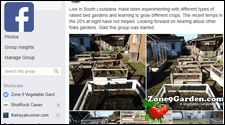Herbs are some of the easiest, and more rewarding plants to grow in a container. Most herbs will not only survive but will thrive in an appropriate sized container. Mixing multiple types of herbs into one container allows for many types of herbs to be grown in a small area. Here are some tips to grow mixed herbs in a container.
Container Selection
When selecting a container to grow mixed herbs in all that is required is a large enough size for the types of herbs to be grown and proper drainage. Some herbs can get quite large, over 3’ tall and require a fairly large container and the container should have functional drainage holes.
Soil Selection
Most herbs require well-drained and fertile soil. When planting herbs in a container a high quality, commercially available soil can be used. If a homemade mix is more preferable the soil should contain a large amount of organic matter. A good combination would be 1/3 compost, 1/3 peat moss and 1/3 vermiculite.
Herb Selection
When selecting herbs it is important to keep size in mind. Tall herbs can shade shorter herbs and stunt their growth, while herbs that run (IE mint) can quickly take over an entire container and choke out all other herbs.
Here is a list of 5 herbs that are commonly used in a mixed herb container and their potential heights:
Dill – 3’
Basil – 2’
Parsley – 10”
Thyme – 10”
Oregano – 12” (Often does not get tall but will trail along the substrate)
Tips
- Plant tallest herbs in the center of the container and shortest to the outside.
- Running or Trailing herbs (like Oregano) work very well on the outside of a container and also help maintain moisture in the soil.
- Most herbs will grow will from see and can be easily started indoors.
- Most herbs require a fair amount of sunlight.
- Harvest herbs often by pruning stems and use the cuttings in the kitchen.
- Branching herbs height can be controlled by cutting the top of the plant off frequently, this will cause a shorter and more bushy plant.



Comment here